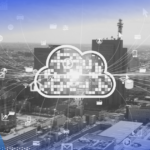The Role of Artificial Intelligence in Modern Software Development has become a pivotal theme in today’s tech landscape. With the rapid evolution of AI technologies, developers are witnessing a transformative shift that enhances productivity and innovation. As organizations strive to stay competitive, the integration of AI into software development processes is no longer optional but essential, paving the way for smarter applications, automated workflows, and data-driven decision-making.
This remarkable synergy between AI and development not only streamlines code creation but also facilitates ongoing updates, ensuring products remain relevant in a fast-paced digital world. From predictive analytics aiding in bug detection to intelligent systems that learn from user behavior, AI is redefining what is possible in software design and implementation.
In the realm of modern communication, the evolution of technology has brought about unprecedented changes in how we interact with one another. From the advent of the internet to the rise of social media, our methods of connection have transformed drastically over the past few decades. This article delves into the various facets of modern communication, examining its impact on personal relationships, professional dynamics, and societal norms.To begin with, let’s explore the impact of social media on personal relationships.
Platforms like Facebook, Instagram, and Twitter have made it easier than ever to stay in touch with friends and family, regardless of geographic boundaries. Through these mediums, we can share snippets of our lives, celebrate milestones, and even offer support during tough times. However, while social media fosters connectivity, it also presents challenges. The curated nature of online personas can lead to unrealistic comparisons, breeding feelings of inadequacy among users.
As individuals present only their best selves, the risk of misunderstanding and superficial connections increases, challenging the authenticity of our relationships.Moreover, while social media can enhance relationships, it can also detract from face-to-face interactions. Studies have shown that excessive engagement on these platforms may lead to decreased levels of in-person communication. When we prioritize online exchanges over personal ones, we risk losing the depth and richness that come from direct interactions.
This brings us to an essential question: how do we strike a balance between our online and offline lives? The answer lies in setting boundaries. By designating specific times for social media use and making a conscious effort to engage in real-life conversations, we can cultivate deeper connections with those around us.Transitioning from personal to professional realms, the influence of modern communication tools has reshaped workplace dynamics.
Gone are the days of solely relying on emails and memos; today, instant messaging platforms like Slack and Microsoft Teams have become staples in professional communication. These tools not only facilitate quicker exchanges of information but also foster collaboration among team members, regardless of their physical location. As remote work becomes increasingly prevalent, these communication technologies play a crucial role in maintaining productivity and team cohesion.

Yet, while these tools offer numerous advantages, they also pose challenges. The constant influx of messages can lead to information overload, making it difficult for employees to focus on their primary tasks. Additionally, the informal nature of instant messaging may blur the lines between professionalism and casual conversation, potentially leading to misunderstandings. To navigate these challenges, companies should establish clear communication protocols, ensuring that employees understand when to utilize different platforms and the importance of maintaining professionalism, even in informal settings.Another significant aspect of modern communication is the rise of video conferencing technology.
Platforms like Zoom and Google Meet have gained immense popularity, particularly in light of the COVID-19 pandemic, which forced many businesses to adopt remote work models. Video conferencing has bridged the gap between in-person meetings and remote participation, allowing teams to connect visually and verbally despite physical separation. While this technology enables effective collaboration, it also introduces new etiquette standards.
Participants are now expected to dress appropriately, maintain eye contact, and minimize distractions during virtual calls, which can be challenging in a home environment.Additionally, the global nature of modern communication has led to increased diversity in the workplace. As companies expand their reach, they often hire employees from various cultural backgrounds. This diversity can enrich conversations and foster creativity; however, it also necessitates an understanding of cross-cultural communication.
Misinterpretations can arise from differences in language, tone, and non-verbal cues. Therefore, organizations must prioritize cultural competence training to equip employees with the skills needed to navigate these complexities effectively.As we reflect on the broader societal implications of modern communication, it becomes evident that technology has a profound impact on public discourse. Social media platforms can amplify voices and bring attention to social issues, empowering movements such as #MeToo and Black Lives Matter.
However, the same platforms can also spread misinformation and foster polarization. The phenomenon of echo chambers, where individuals are exposed only to information that aligns with their beliefs, poses a significant threat to constructive dialogue. To combat misinformation, users must develop critical thinking skills and engage with diverse perspectives, fostering a culture of open and informed discussions.Furthermore, the rise of communication technology has implications for mental health.
The constant connectivity can lead to feelings of anxiety and stress, as individuals grapple with the pressure to respond promptly and maintain an active online presence. The phenomenon of “FOMO” (fear of missing out) can exacerbate these feelings, as social media often presents an idealized version of reality. To promote mental well-being, it’s essential to encourage digital detoxes and mindfulness practices, allowing individuals to disconnect and recharge their mental faculties.In conclusion, modern communication is a multifaceted and dynamic landscape that drastically shapes our personal and professional lives.
While it offers unparalleled opportunities for connection and collaboration, it also presents challenges that require careful navigation. By setting boundaries, fostering cultural competence, and promoting critical thinking, we can harness the power of modern communication to build stronger relationships and a more inclusive society. As we continue to evolve in this digital age, let us remain mindful of the impact our communication choices have on ourselves and others, striving for authenticity and understanding in all our interactions.



